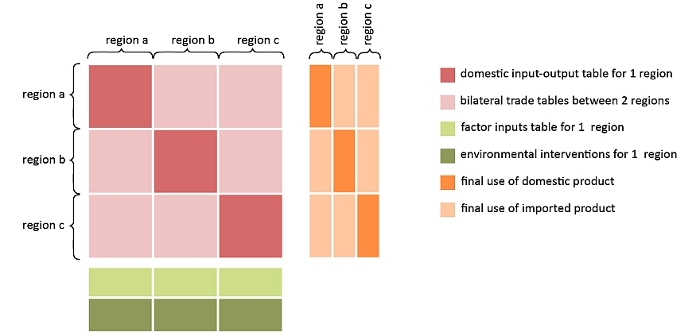Europe is the only continent living at the expense of others
Europe can only maintain its level of consumption by structurally relying on resources extracted abroad. This finding was published in the September issue of the prestigious journal Global Environmental Change, in a paper that was co-written by scientists at Leiden University.
Input-output balance
If a country imports more than it exports, economists usually get nervous. The country then pays more for its imports than it earns via its exports and hence loses money, something which cannot last long. Europe is in the situation that this import-export balance is negative for all relevant environmental parameters: carbon, water, materials, land.
Europe's imbalance
'Europe is the only world region where foreign resources play such a major role in maintaining domestic consumption,' says professor Arnold Tukker of CML, who led the study. 'All other continents are at least a net exporter of one of the resource categories we studied.' The work of the research team illustrates the importance of two key European policy agendas. These are the Raw Materials Initiative, that seeks to enhance resource production in Europe, and the Circular Economy Strategy, that seeks to drastically enhance the efficiency of resource use. 'Successfully implementing these synergistic agendas is the only way Europe can reduce its dependence on the use of resources from abroad. This means it is crucial that the related initiatives from industry, policy and research, such as the European Institute for Technology Raw Materials program, continue to operate,' concludes Tukker.
The study was carried out by an international team of scientists from the Institute of Environmental Sciences Leiden (Leiden University - CML), the Netherlands Organisation for Applied Scientific Research TNO, the Norwegian University of Science and Technology (NTNU), and the Vienna University of Science and Business.

In the EU-funded FP7 CREEA project, their team built one of the most sophisticated environmental input output databases (EIO) in the world, EXIOBASE. EXIOBASE maps at a high level of detail all (primary and intermediary) product inputs and product outputs by economic sectors by country, and also charts all bilateral trade between countries. It further gives all primary resource uses (land, water, materials) and emissions (such as CO2) by economic sector by country.
With such a global EIO, for a specific final demand category in a specific country (e.g. beef consumption), it is now possible to calculate which production was needed by which economic sector in which country in the full supply chain – which in turn allows us to calculate the total resource use and emissions over this supply chain. For all indicators - water, land, materials and carbon - it appeared that extraction and emissions required for the total final consumption in Europe are higher than the total resource extraction and emissions in Europe itself.
Article
